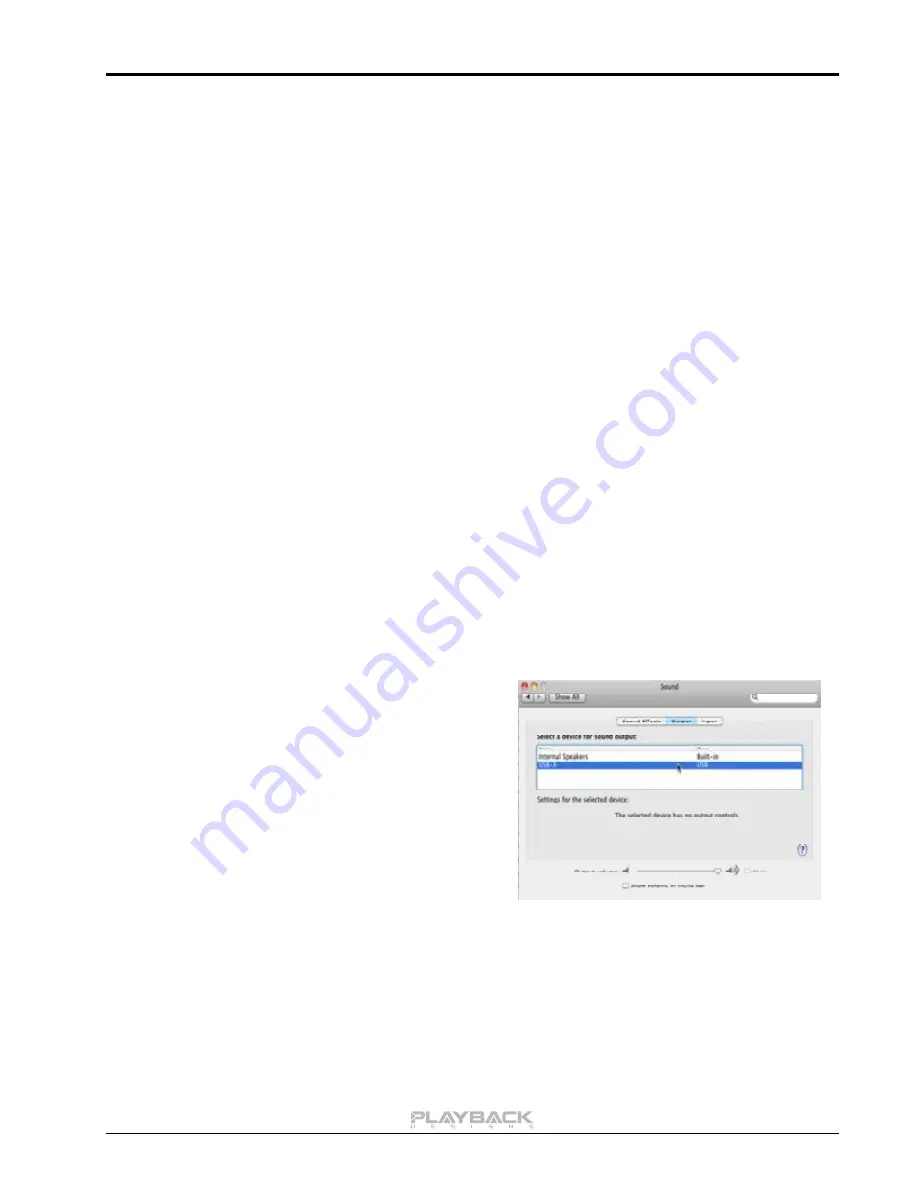
MPD-5 User Manual
13
General notes
1. For best performance and bit perfect reproduction make sure to set all volume controls in the
playback software, control panel to exactly 0db (wide open), turn off all operating system sounds,
effects or equalizer that might be running in your playback software or Windows / OSX. Control the
volume only with your analog pre-amp.
2. While the MPD-5 has no problem supporting playback via USB while it is switched to a different input
(i.e. disc playback, AES or Coax input) it is a good idea to stop playback on your computer before
selecting another input. The clock management in the MPD-5 may not provide the correct frequency
to the USB port if it is not selected. The computer software may have a problem with that and may
malfunction. So when not listening to the USB input, stop playback on your computer.
When things do not seem to work
The MPD-5 is a hardware device with very little software inside and if it doesn’t show any signs of
malfunctioning in other playback modes, it is relatively safe to assume that the problem is either with the USB
link or the computer. Generally, you should look for any signs of trouble on your computer first, and don’t
assume that because your computer may work with someone else’s USB DAC, but not with the MPD-5, that
the problem is with the MPD-5. The MPD-5 uses different software inside your computer.
Here are a few suggestions for what to do:
1. The USB-X interface is powered by the computer via the USB cable, but the clock signal is coming
from the MPS-5. So every time you turn off the MPS-5 you will have to unplug the USB cable from the
computer and plug it back in once the MPS-5 is powered up again.
2. Make sure that the driver is properly installed (PC only). See step 6 under driver installation above for
instructions for how to check successful installation and connection.
3. Make sure the USB-X is properly connected to the MPD-5 with the included optical cable. Only use
the cable that was shipped with the USB-X. If the front panel indicates “NO LOCK” when the PLINK
input is selected then that points to a broken connection with the USB-X.
4. Make sure you use the USB cable that was shipped with the MPD-5. Other USB cables can be used,
but they need to be USB2.0 compatible.
5. Disconnect the USB cable and restart your
computer.
6. Connect the USB cable while the PLINK input is
selected on the MPD-5. On Mac computers it can
take up to 10 seconds to enumerate.
7. On Mac computers it can happen that after
successful enumeration OSX selects the internal
audio output instead of the MPD-5. This can easily
be corrected manually in the sound control panel in
System Preferences as shown in this screen shot.
8. If at this point your PC computer still does not play through the MPS-5 and the driver or USB-X
cannot be identified in the Device Manager (PC) then disconnect the USB cable and try re-installing
the driver following exactly above instructions.
9. If you are a PC user and are able to play audio, but you hear occasional dropouts, please see
IMPORTANT NOTE FOR PC USERS above. You should definitely run LatencyMon.
.




















